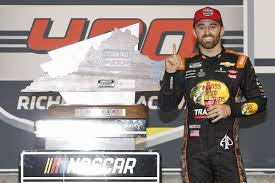
Austin Dillon may still get to wake up and stare at the trophy he earned from the Cook Out 400, but that’s about the only positive he gained from the Sunday race.
On Wednesday, NASCAR announced that Dillon’s victory at Richmond Raceway will not count toward his eligibility for the 2024 NASCAR Cup Series playoffs, moving the driver and his No. 3 team from 13th in the playoff standings back down to 31st, nearly 200 points out of a playoff berth.
NASCAR’s decision to make Dillon’s victory not count toward playoff eligibility may be one of the most important ruling the sanctioning body has made since instituting the knockout-style format in 2014.
Drivers have resorted to desperation in regards to the playoffs before — see Ryan Newman’s move on Kyle Larson at Phoenix in 2014, or Kevin Harvick intentionally crashing the field at Talladega in 2015 — but Dillon’s move on Sunday trumped all prior incidents in terms of severity.
Not only did Dillon not attempt to make the corner before spinning Joey Logano in turn three, but he also turned down and hooked Denny Hamlin coming to the line in a desperation move that only the difference between making and missing the playoffs could have spurred.
NASCAR has always flirted with the idea of “boys have at it” in an attempt to both appeal to old-school fans while also loosely defining the lines of what constitutes a penalty for overaggressive moves. Since the beginning of auto racing — and in reality, every competition — competitors have always sought advantages, whether they be fair or unfair.
Dillon intentionally crashing both Logano and Hamlin wasn’t a trivial event equal to Smokey Yunick or Junior Johnson trying to mess with a fuel line. It wasn’t equal in severity to a driver slightly jumping a restart or nudging a competitor up the track.
Dillon didn’t just take the physicality and aggression of NASCAR to the extreme, but abused the unwritten rules and undrawn lines that weren’t there, simply because NASCAR likely didn’t think a driver would ever be in such a desperate situation to warrant hooking a competitor into the wall for a race win.
Leave a Reply